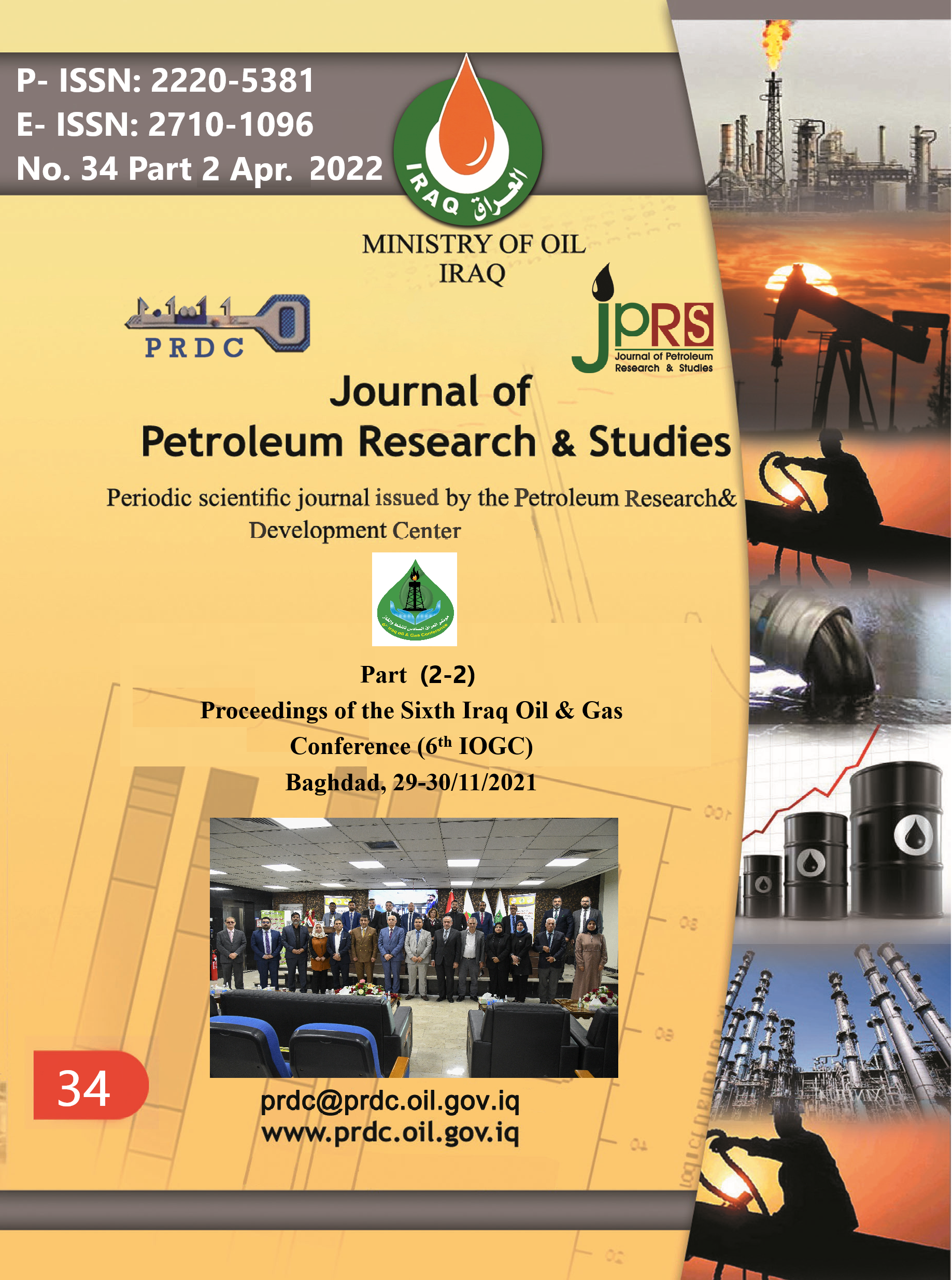Protection of Oil Refinery Furnaces Bricks Using Coatings of Nano Zirconia-Glass Composites
DOI:
https://doi.org/10.52716/jprs.v12i1(Suppl.).629Keywords:
Ceramic coating, Glass frit, PSZ, ZrO2, Refractory bricksAbstract
The process of ceramic or refractory surfaces coating is one of the methods used to protect the ceramic body from chemical effects resulting from operating conditions, especially in the applications that include acid gases emissions such as furnaces of petroleum refining units. A mixture of low-melting glass frit was used, reinforced with nano powders of zirconia and Partial Stabilized Zirconia with yttria (3Y-PSZ) with different additives 5wt% and 10 wt%, as well as the addition of nano-alumina for the same percentage of addition. The medium alumina refractory brick which used in lining petroleum refining units was used as a basis for coating.
The coating process was implemented after mixing and preparation of a homogeneous suspension in the presence of water, then drying and sintering until glazing at a temperature of 850 oC. X-ray diffraction technique was used to show the structural characterization of the glazing, which indicated that a glass frit layer was transformed into a mixture of ceramic-glass (crystalline glass), where the crystalline structures of the nano powders were clearly visible. Surface roughness showed low values for frit added with 5wt% of (3Y-PSZ) as well as the frit to which was added 10 %wt of (3Y-PSZ with 5wt% alumina). Moreover, all samples showed clear chemical resistance against acids, including concentrated H2SO4. Thermal shock resistance varied for vitrification mixtures, but it was good for vitrified samples, adding 10%wt of (3Y-PSZ) with 5wt% alumina as well as adding silicate to the mixture, and these mixtures are considered to be the best in medium alumina refractory surfaces coating.
References
Cardarelli, F., 2008. Ceramics, refractories, and glasses. Materials handbook: a concise desktop reference, pp.593-689.
Mahapatra, M.K., 2020. Review of corrosion of refractory in gaseous environment. International Journal of Applied Ceramic Technology, 17(2), pp.606-615.
Sengupta, P., 2020. Refractories for the Chemical Industries. Springer International Publishing AG.
Schacht, C. ed., 2004. Refractories handbook (Vol. 178). CRC Press.
Casasola, R., Rincón, J.M. and Romero, M., 2012. Glass–ceramic glazes for ceramic tiles: a review. Journal of Materials Science, 47(2), pp.553-582.
Bou, E., Moreno, A., Escardino, A. and Gozalbo, A., 2007. Microstructural study of opaque glazes obtained from frits of the system: SiO2-Al2O3-B2O3-(P2O5)-CaO-K2O-TiO2. Journal of the European Ceramic Society, 27(2-3), pp.1791-1796.
Plesingerova, B. and Kovalcikova, M., 2003. Influence of the thermal expansion mismatch between body and glaze on the crack density of glazed ceramics. Ceramics-Silikáty, 47(3), pp.100-107.
Hopper, R., 2008. The Ceramic Spectrum: A Simplified Approach to Glaze & Color Development, Second Edition. American Ceramic Society Company.
Romero, M., Padilla, I., Contreras, M. and López-Delgado, A., 2021. Mullite-Based Ceramics from Mining Waste: A Review. Minerals, 11(3), p.332.
Martín-Márquez, J., Rincón, J.M. and Romero, M., 2010. Mullite development on firing in porcelain stoneware bodies. Journal of the European Ceramic Society, 30(7), pp.1599-1607.
Chargui, F., Hamidouche, M., Belhouchet, H., Jorand, Y., Doufnoune, R. and Fantozzi, G., 2018. Mullite fabrication from natural kaolin and aluminium slag. boletín de la sociedad española de cerámica y vidrio, 57(4), pp.169-177.
Li, W., Li, J., Wu, J. and Guo, J., 2003. Study on the phase-separated opaque glaze in ancient China from Qionglai kiln. Ceramics international, 29(8), pp.933-937.
Wan, W., Feng, Y., Yang, J., Bu, W. and Qiu, T., 2016. Microstructure, mechanical and high-temperature dielectric properties of zirconia-reinforced fused silica ceramics. Ceramics International, 42(5), pp.6436-6443.
Sheikhattar, M., Attar, H., Sharafi, S. and Carty, W.M., 2016. Influence of surface crystallinity on the surface roughness of different ceramic glazes. Materials Characterization, 118, pp.570-574.
Sinex, S.A., Halpern, J.B. and Johnson, S.D., 2017. General Chemistry for Engineers in the 21st Century: A Materials Science Approach. MRS Advances, 2(31), pp.1629-1634.
Li, K., Wang, D., Chen, H. and Guo, L., 2014. Normalized evaluation of thermal shock resistance for ceramic materials. Journal of Advanced Ceramics, 3(3), pp.250-258.
Zaidan, S.A., 2017. Improvement the Chemical Resistance of Furnaces Bricks for Petroleum Refineries by ZrO2-Nano-Glass-Ceramic Coated. Engineering and Technology Journal, 35(10 Part A).
Cui, K., Zhang, Y., Fu, T., Wang, J. and Zhang, X., 2020. Toughening mechanism of mullite matrix composites: A Review. Coatings, 10(7), p.672.
Downloads
Published
How to Cite
Issue
Section
License
Copyright (c) 2022 Shihab A. Zaidan, Hafidh Y. Abed, Sattar J. Hussein, Hussam J. Mousa, Basim A. Abbood

This work is licensed under a Creative Commons Attribution 4.0 International License.














